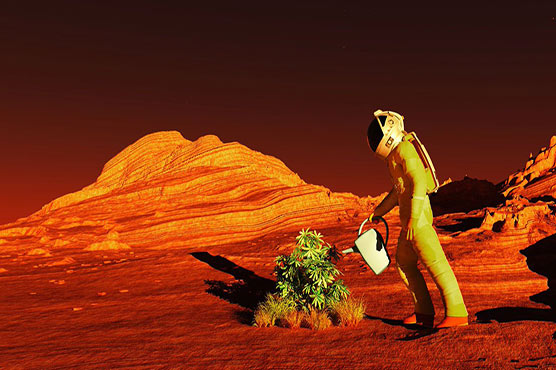Is there life on Mars? Chinese students sample planet colony conditions

A plan to invest 2.5 billion yuan ($374 million) will expand the site to 67 sq km (26 square miles)
JINCHANG (Reuters) - About 100 excited Chinese teenagers on Wednesday completed a five-hour tour of a space colony against a desolate backdrop, a lot like the desert planet of Tatooine, the home world of Luke Skywalker.
They were not on the set of Star Wars, but at a Chinese-built Mars simulation base in the barren, windswept hills of Gansu province.
The facility - comprising several interconnected modules including a greenhouse and a mock decompression chamber - opened its doors to the public.
Mars Base 1 Camp, covering an area about one-fifth of an American football field, is the brainchild of a media company and officials in Gansu, a relatively poor province in northwest China.
Officials hope the camp, about 40 km (25 miles) from the township of Jinchang, will boost tourism and allow visitors to feel as though they are on the red planet.
A plan to invest 2.5 billion yuan ($374 million) will expand the site to 67 sq km (26 square miles) and hopes to attract 2 million visitors a year by 2030.
China s space programme has fired up imaginations and public appetite for science and science fiction.
China is developing powerful rockets to help realize a more ambitious dream of sending a probe to Mars in 2020. After that, scientists hope to explore asteroids and even land on one.
Apart from being a tourist attraction, the camp has collaborated with the Astronauts Center of China (ACC) to eventually turn the facility into an astronaut-training centre.
On the neighboring Qinghai-Tibet plateau, China unveiled its first Mars "village" in March.

